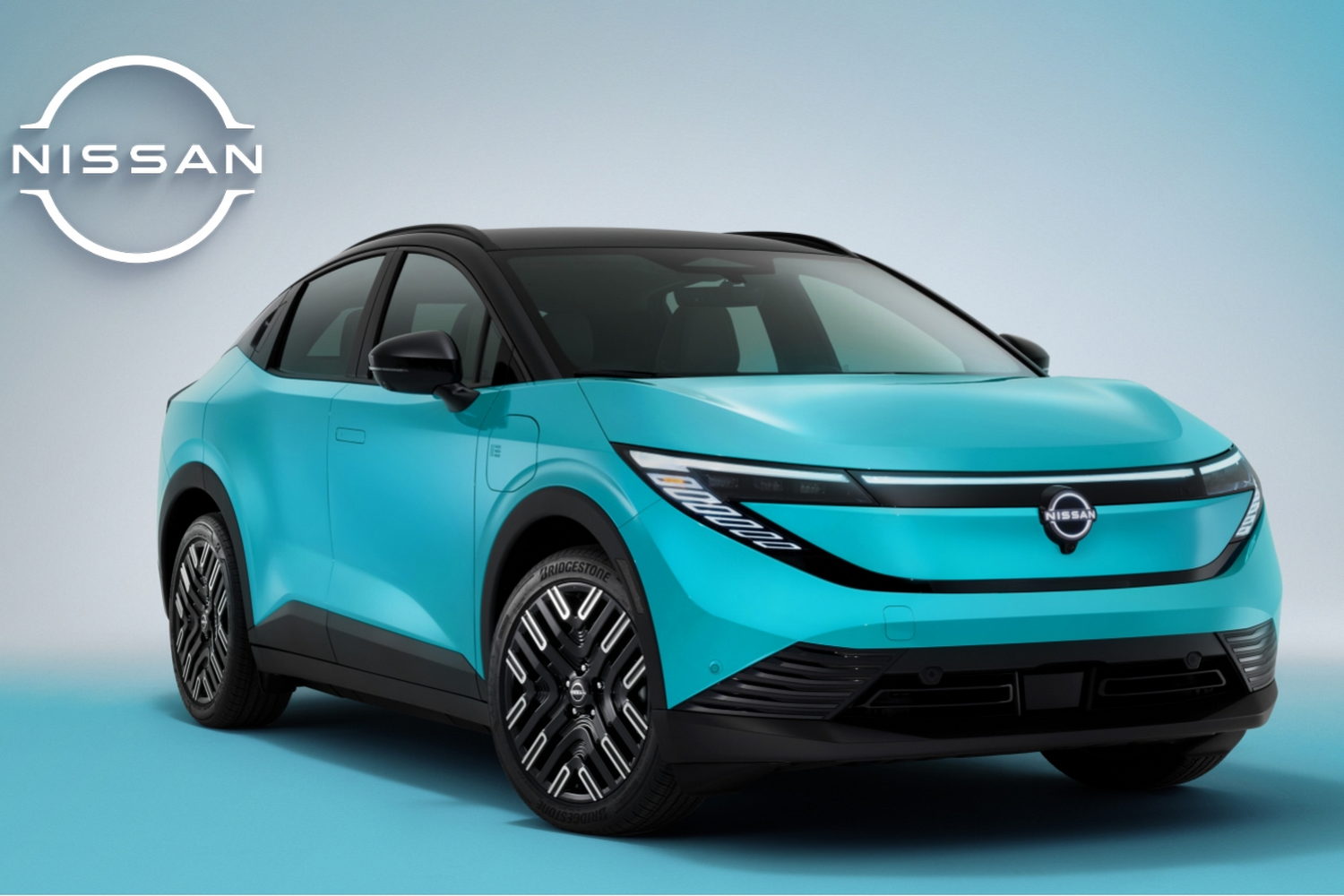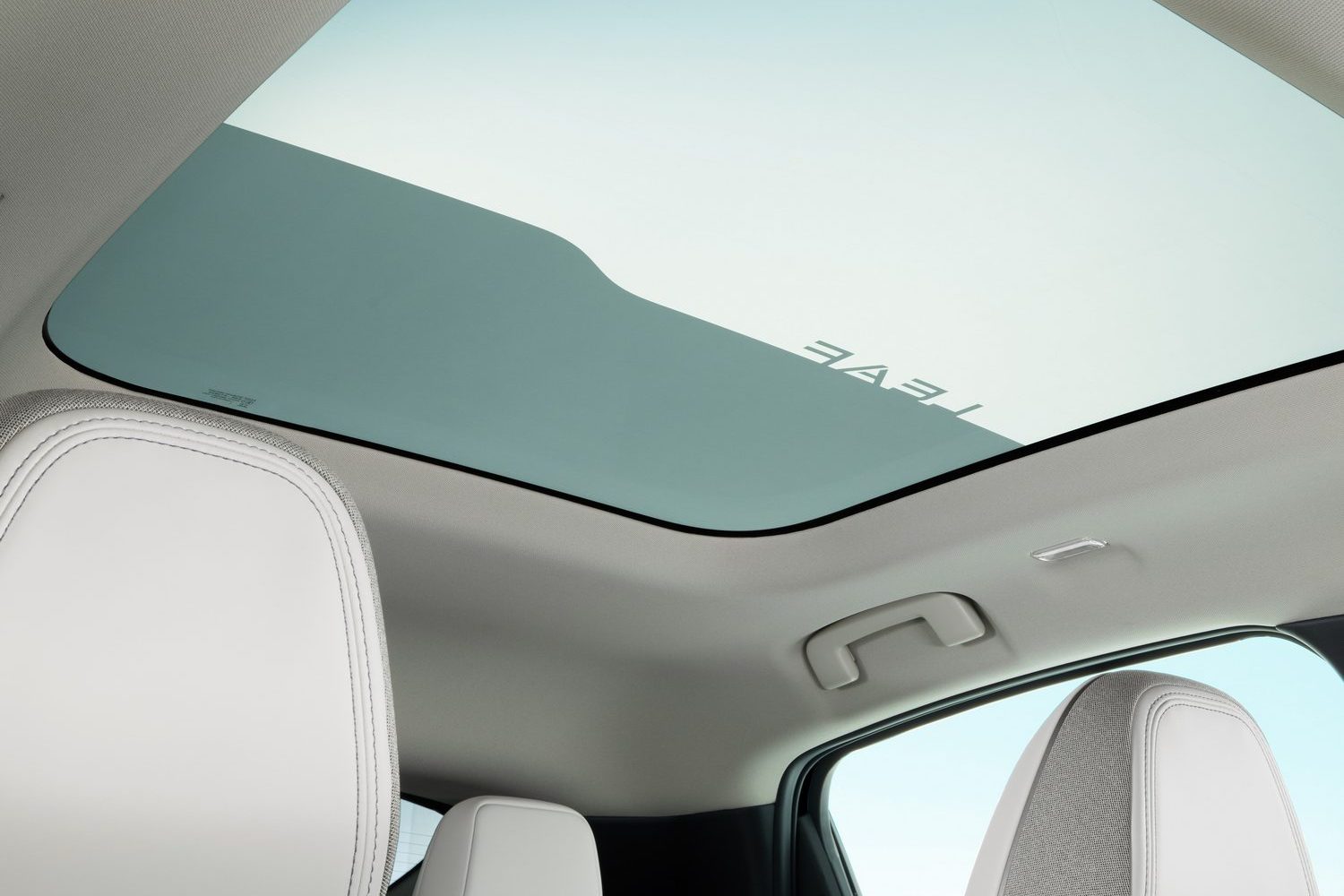Nissan has fully unveiled the third-generation Leaf, and it marks a dramatic change from the two previous hatchback models.
Is the Leaf an SUV now?
Not quite, it's more of a sleek crossover, being around 10mm taller than the outgoing hatchback. Unusually it's also shorter, and just a small bit wider, yet Nissan claims improvements in cabin space - 80mm more rear legroom for instance - and boot volume - which grows by 50 litres to 437 litres - compared to the old model. That's thanks to the packaging advantages of the 'CMF-EV' platform shared with the larger Nissan Ariya.
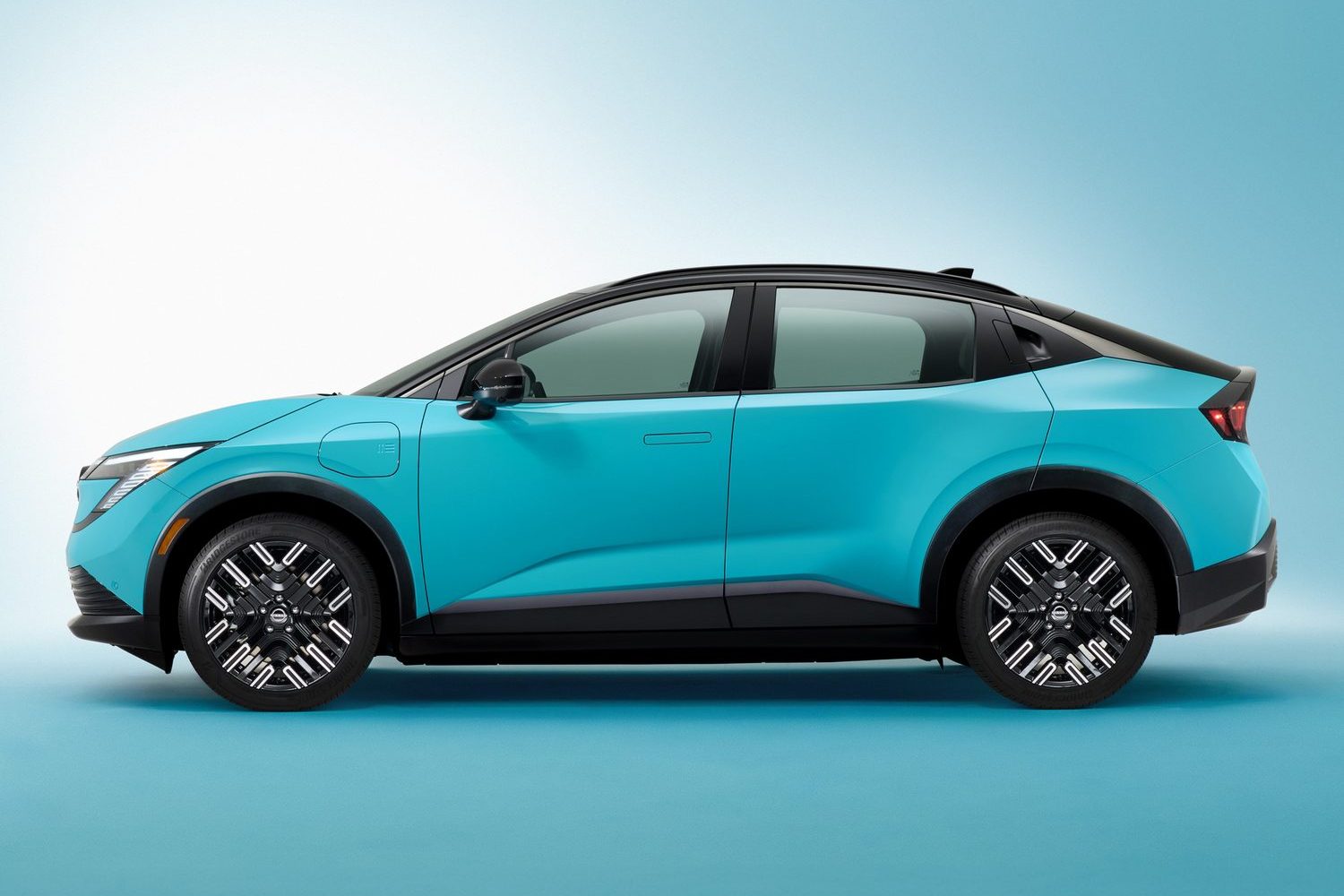
What about the range, though?
Arguably the batteries and range of the new Leaf represent a bigger change than the styling (which we'll talk more about in a moment). The previous Leaf had an official range of 385km from its biggest 62kWh battery, but that battery - and the smaller 40kWh unit - were both derived from the original 2010 Leaf's 24kWh unit and hence used older technology.
Now, the Leaf will be bang up to date in battery terms, and that's demonstrated by the fact that the entry-level 52kWh battery will provide a range of up to 436km on a full charge - a better range than the old 62kWh unit managed.
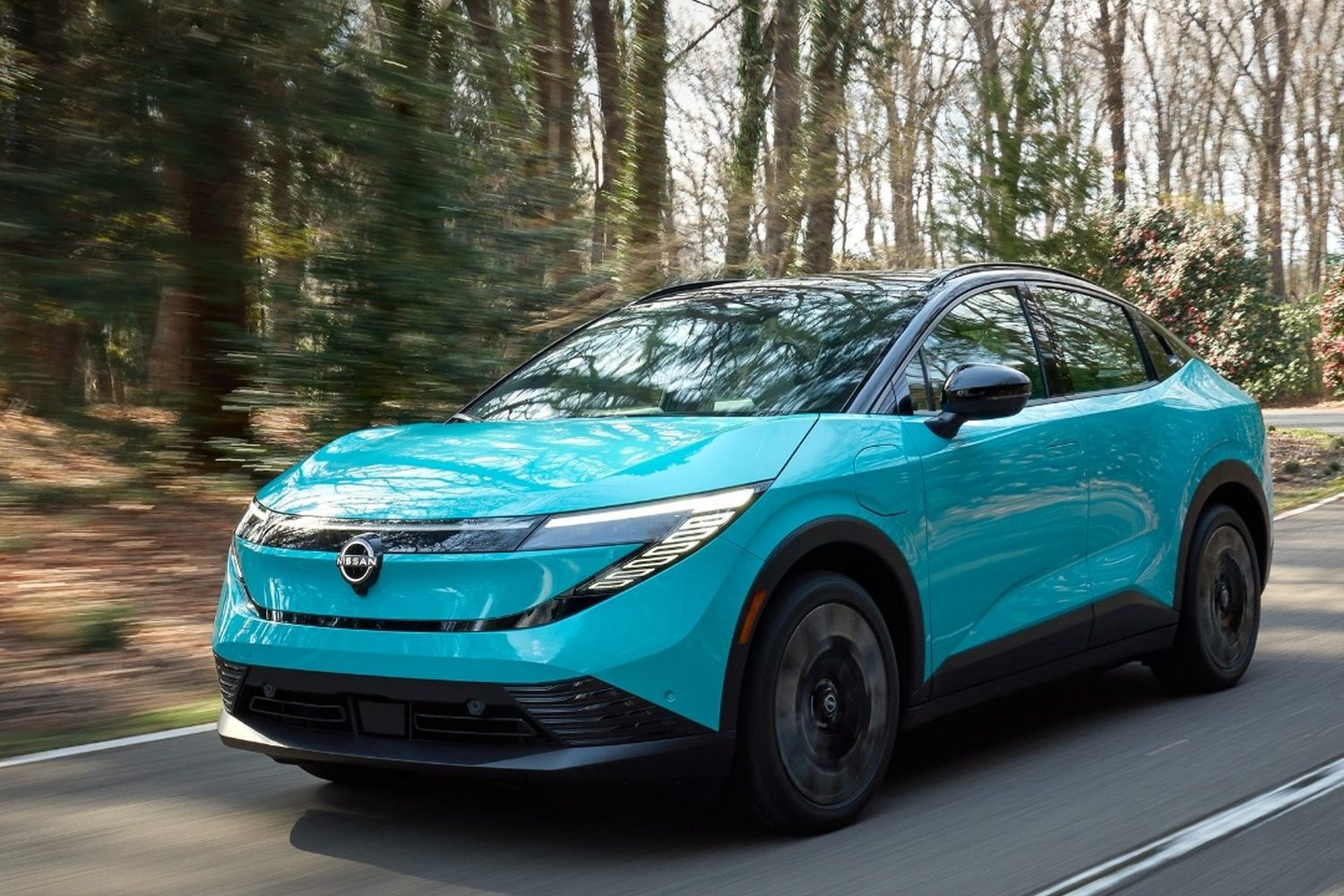
Of potentially more interest is the big-battery version, which gains a 75kWh pack and a quoted range of up to 604km, thanks to average energy consumption of just 14.2kWh/100km. That's an enormous range boost for Leaf owners.
They'll be able to charge much more quickly too. The previous two versions of the Leaf used the outmoded CHAdeMO charging system, which was limited to 50kW at its fastest. The new Leaf trebles that to 150kW for the 75kWh battery (and 105kW for the smaller battery).
That charging speed, and a relatively flat charging curve, means that Nissan can claim an extra 417km of range for 30 minutes of charging on a DC rapid charger. The 20-80 per cent charge time is also now less than 30 minutes.
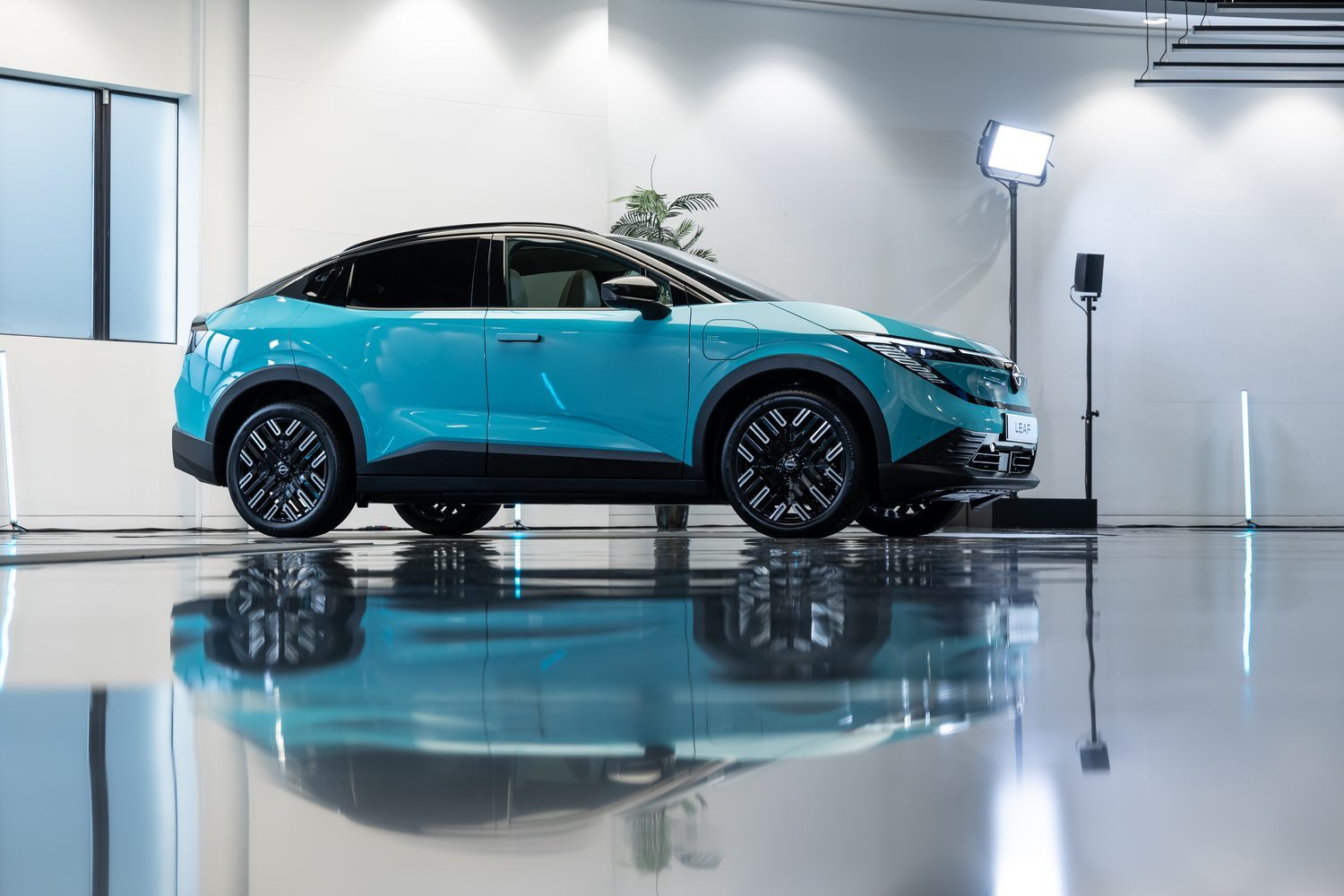
Of course, 604km is the official WLTP figure and Nissan recognises that doesn't reflect real-world driving very well. So the Japanese car maker has tested the Leaf at 10 degrees Celsius at a constant 130km/h and says that in those conditions it will cover 330km on a full charge, leaving you with a reserve of 25km to reach a fast charger.
The 52kWh battery will manage 224km in the same circumstances, so both should manage to go a little further in Irish conditions thanks to our lower motorway speed limits.
In fact, over a theoretical journey of 800km, Nissan reckons that the Leaf will only be slightly behind a conventional combustion car in terms of journey time, assuming that both drivers stop for an occasional cup of coffee and a fuel stop or two.
It's part of the company's stated mission to turn the new Leaf into “a compelling alternative for internal combustion engine buyers.”
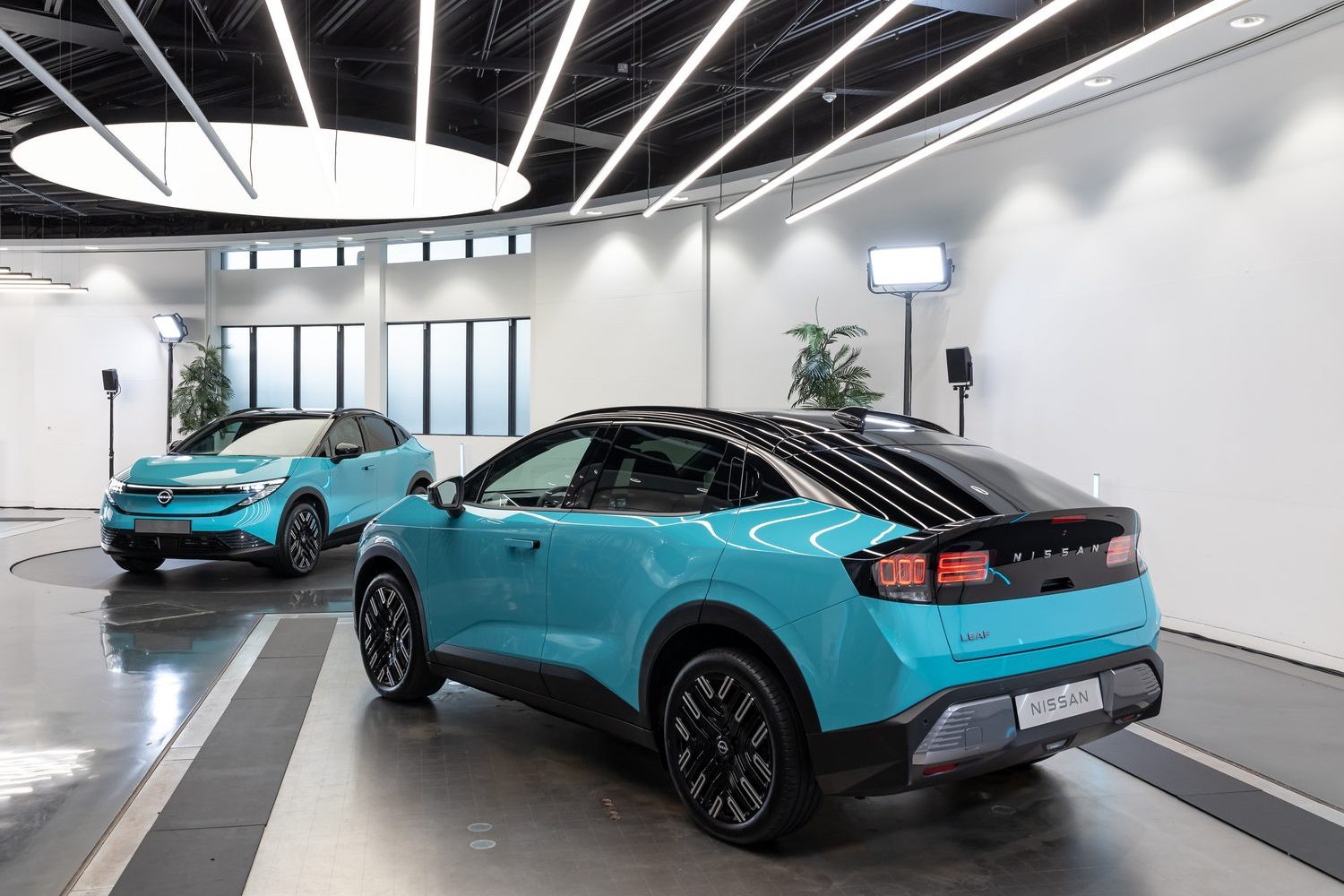
There's also Vehicle To Load (V2L) allowing you to power other electrical devices at up to 3.6kW, which Nissan demonstrated to us by boiling a kettle for a refreshing cuppa.
Vehicle To Grid (V2G) charging is also coming, potentially allowing owners to sell excess battery charge to the national grid at times of high demand, but Nissan admits that this is still a work in progress and may require a hardware upgrade before it's fully integrated.
For slower-speed charging, 75kWh battery versions of the Leaf get 11kW AC charging, but that's an option for the 52kWh battery, which charges at 7.4kW as standard on AC outlets.
It certainly looks different to the old Leaf...
Indeed so. Whereas both previous models of Leaf were quite upright hatchbacks, the new Leaf is a sleek crossover with a distinct Kamm-style tail for improved aerodynamics.
That tail, and the flush-fit door handles (pop-out for the front doors, tucked into the C-pillar for the rears) plus some extensive underbody aero work (even the jacking points have little pop-off covers) mean that Nissan claims a drag coefficient of just 0.25 for the new Leaf, making it quite a bit more slippery than most of its direct rivals.
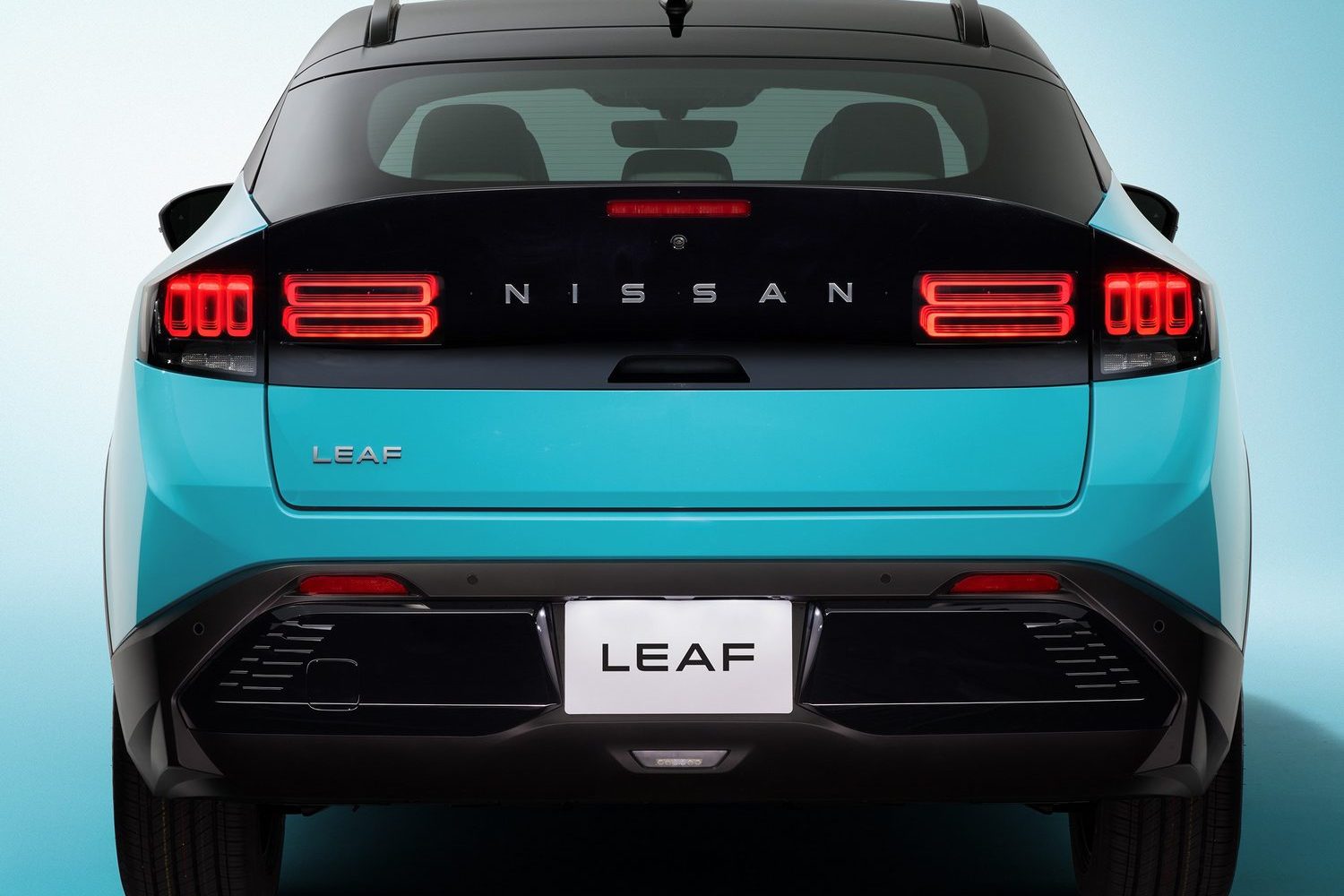
It also sports a very different look to the old Leafs, much more overly sleek and with very clean lines.
According to Giovanny Arroba, vice president of Nissan Europe Design, the challenge in creating the new Leaf was: “We wanted to give it some of the benefits of crossover-ness, but also obviously honour its pioneering EV-ness. The biggest challenge for us from the very beginning was, how do we give the customer the most range out of this battery, out of this platform? And so, we really went into it, shaped it in the wind tunnel to achieve this. But at the same time, how do we amplify the Nissan brand and the Nissan-ness and how do we amplify and bring the sense of vibrant joy, innovation and excitement? We did a bit of soul searching, trying to find what is the spirit of Nissan? We have a lot of heritage. We have cars that are high performance. We have cars that are adventurous for off roading and rugged. We have cars that are also quite charming, such as the Micra K12, and also the very artful pop culture B-segment cars that were launched in the late '80s, early '90s, in Japan. So we wanted to bring some of this charm channel, some of this Nissan DNA and Nissan spirit, and make it into the new Leaf.”
A big part of that was to come up with a new motif, and for that Arroba turned to maths, sort of. In Japanese, the symbols for the numbers two and three are simple line pictographs, and conveniently they're pronounced Ni and San. See where this is going?
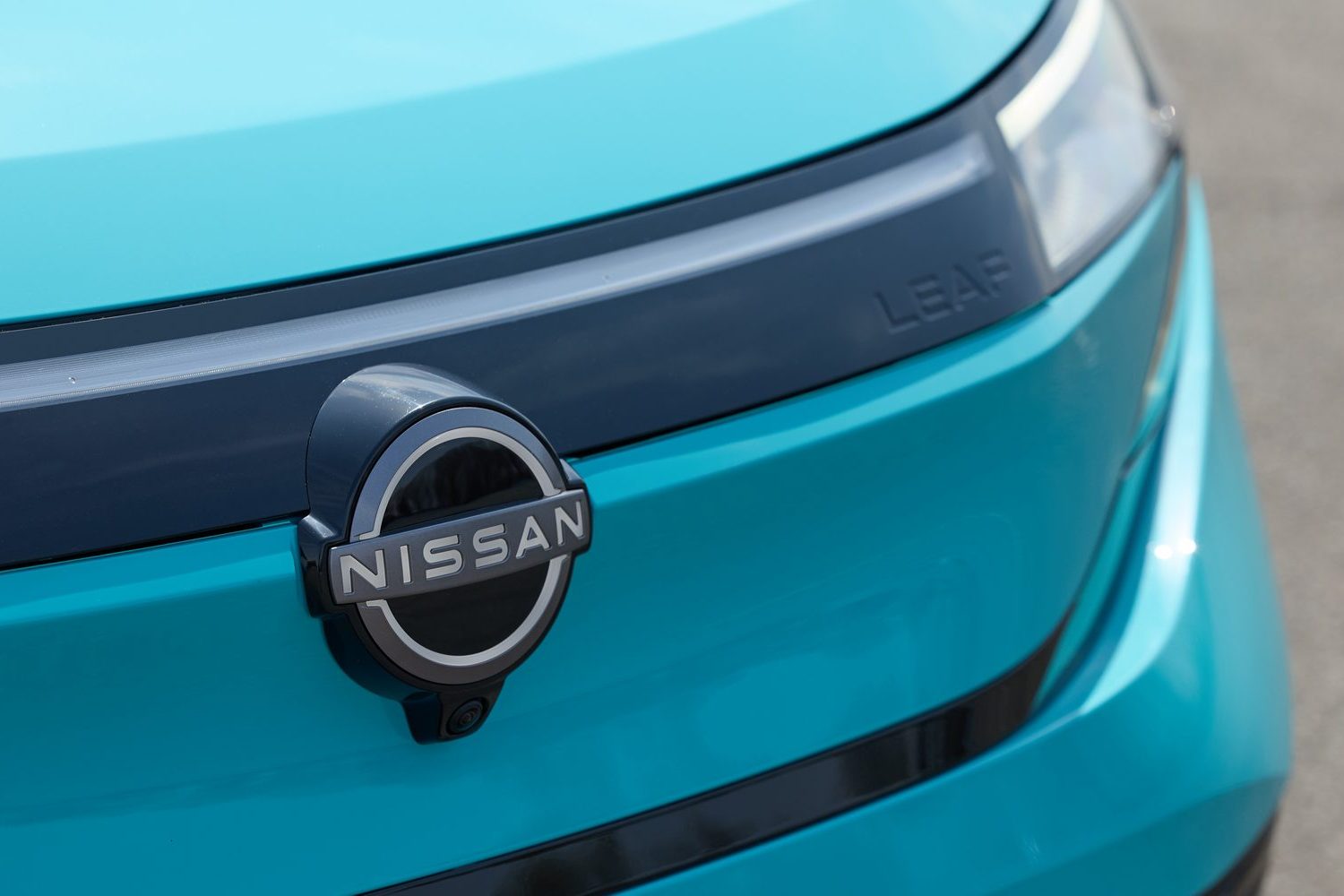
“In Japanese, Ni is two and San is three, so the number 23 you've seen it on maybe some of our race cars,” said Arroba. “We always have number 23 because it's Nissan, but we wanted to create a little motif or an icon. It's not a logo; it's more of an icon or something that celebrates the brand and a unique graphic.”
That graphic, two separate sections of three lines and two lines, now lives in the 3D brake lights of the new Leaf, and also features in other areas, such as on the charging port cover (now moved from the nose to the right-front wing) and on the interior. It's a charming little touch.
What's the new Leaf's interior like?
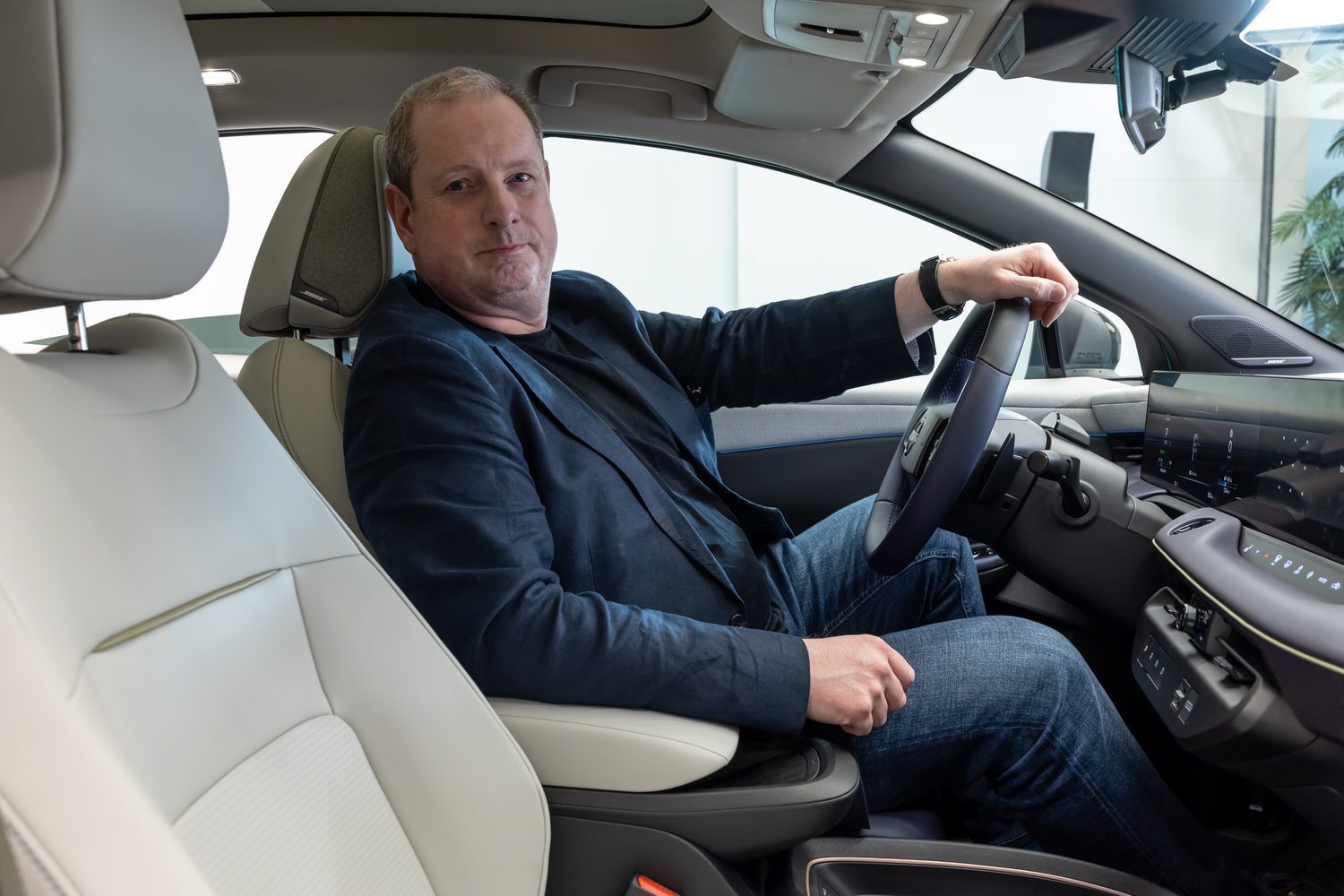
As with the exterior, the new Leaf's cabin marks a dramatic break from the dour black plastic interior of the previous model.
It probably helps that the version we were shown and allowed to poke around was the range-topping Leaf Evolve, which features a light-and-dark interior, with contrasting blue and cream synthetic leather for the seats and the dashboard.
There is a more basic plain black interior for lower-spec model, but we've not seen that yet.
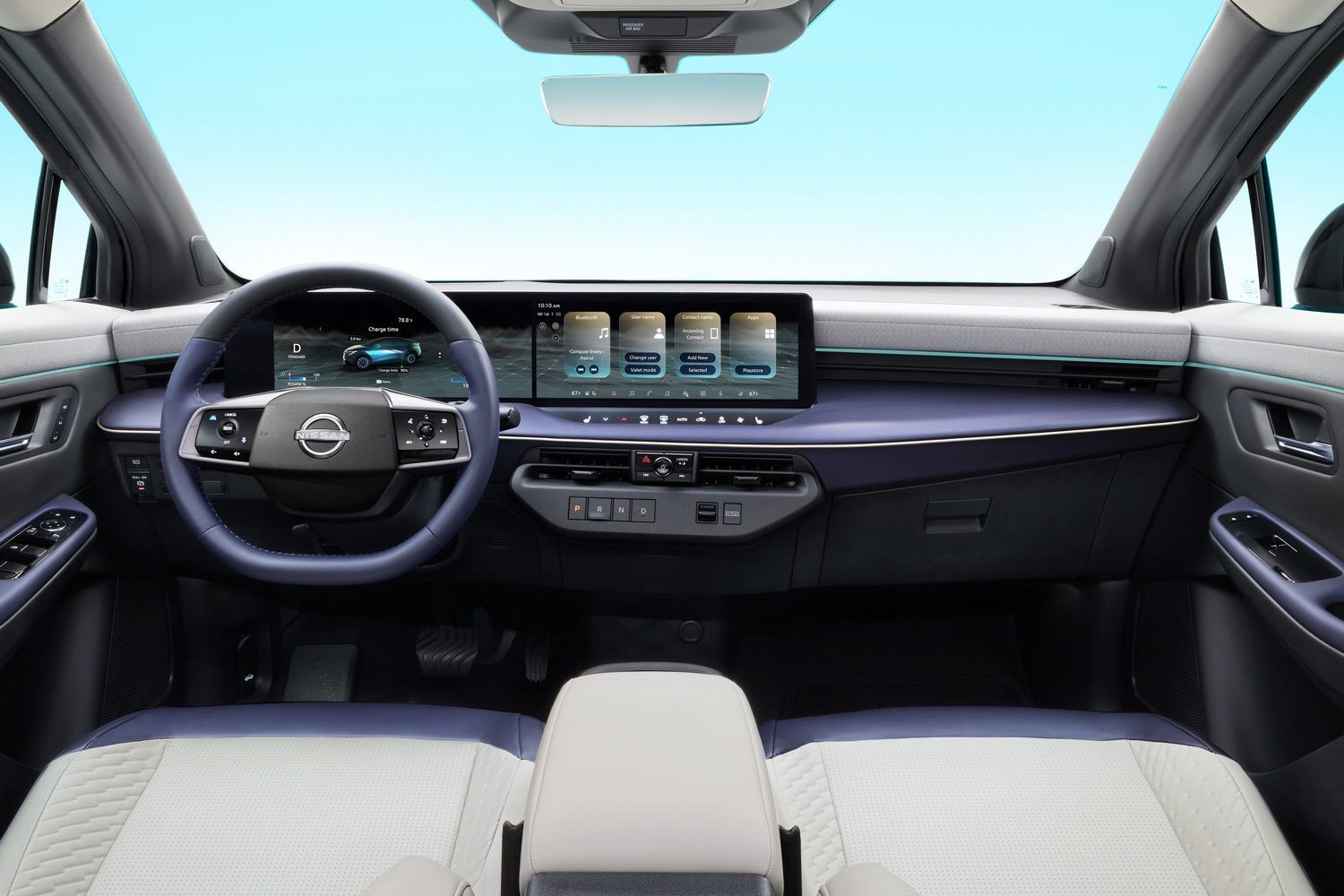
The overall design of the interior is clearly inspired by the larger Ariya SUV and that's no bad thing. Quality levels seem high, certainly from the prototypes we've been allowed to sit in, and there's plenty of useful storage in the centre console, the door bins and a well-sized glovebox.
There are two large 14.3-inch screens atop the dashboard, which make up the driver's instrument panel and the main infotainment screens. The software is now based on Google's Automotive setup, and the graphics look rich. The backgrounds of the screens are also dynamic and subtly change according to the time of day and the weather.
The use of Google software means that Nissan has been able to integrate a lot more connected functionality into the Leaf, including access to the Google Play Store, where there are current 70+ apps available to download including Spotify, Audible, YouTube and Waze.
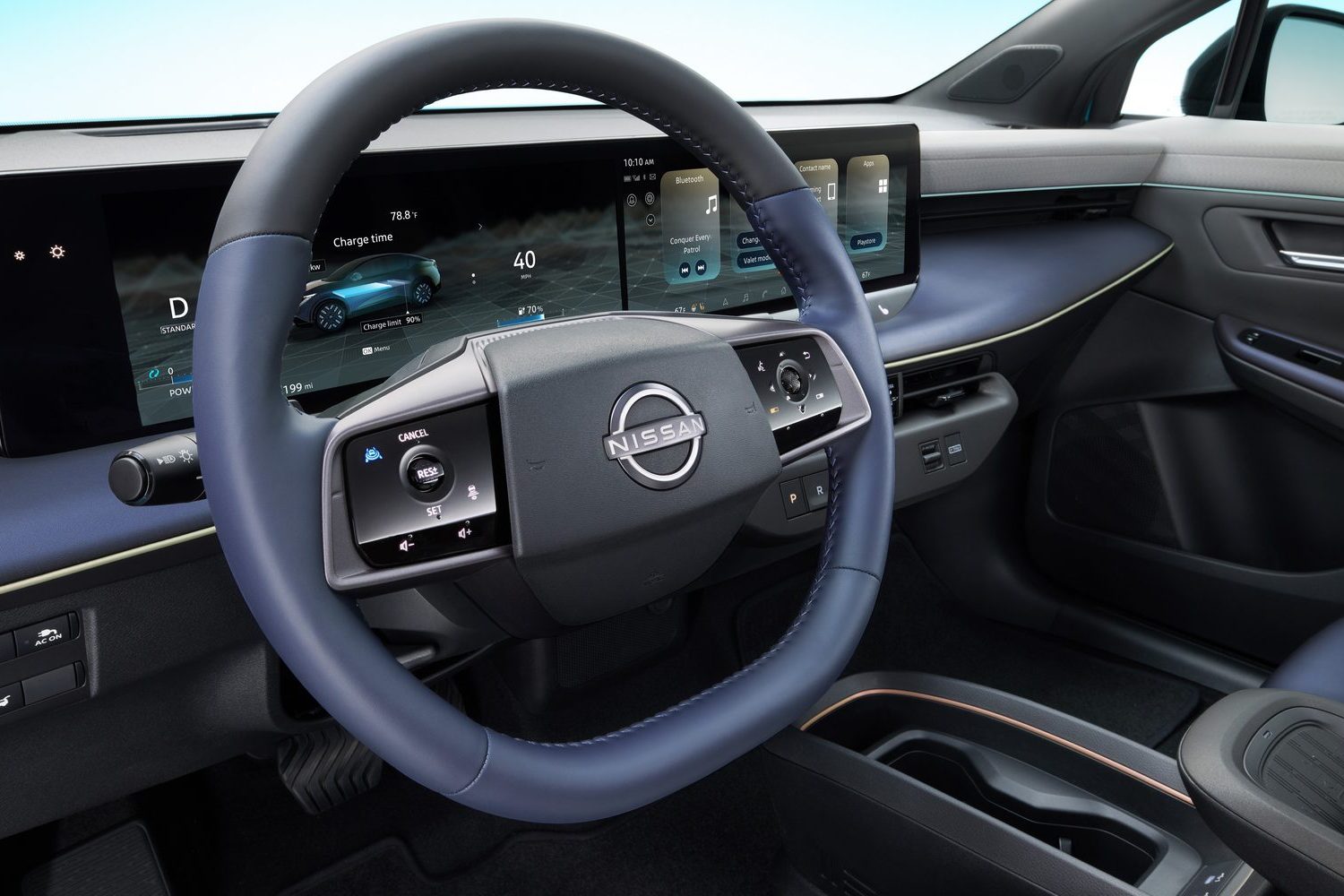
There are also built-in games to play when you stop to charge, although for the moment these have to be controlled by buttons on the screen - Nissan is working on a wireless system that integrates your phone as a control pad.
Speaking of wireless, there's wireless connectivity for Apple CarPlay and Android Auto as standard across the range.
The Google Maps app is fully integrated into the Leaf, so when you set a destination, it can automatically plan charging stops along the way (if it's a long journey) and also automatically set up the battery conditioning system so that you get the best possible charging speed. The system also uses live weather reports so as to better predict the battery's moment-to-moment range performance.
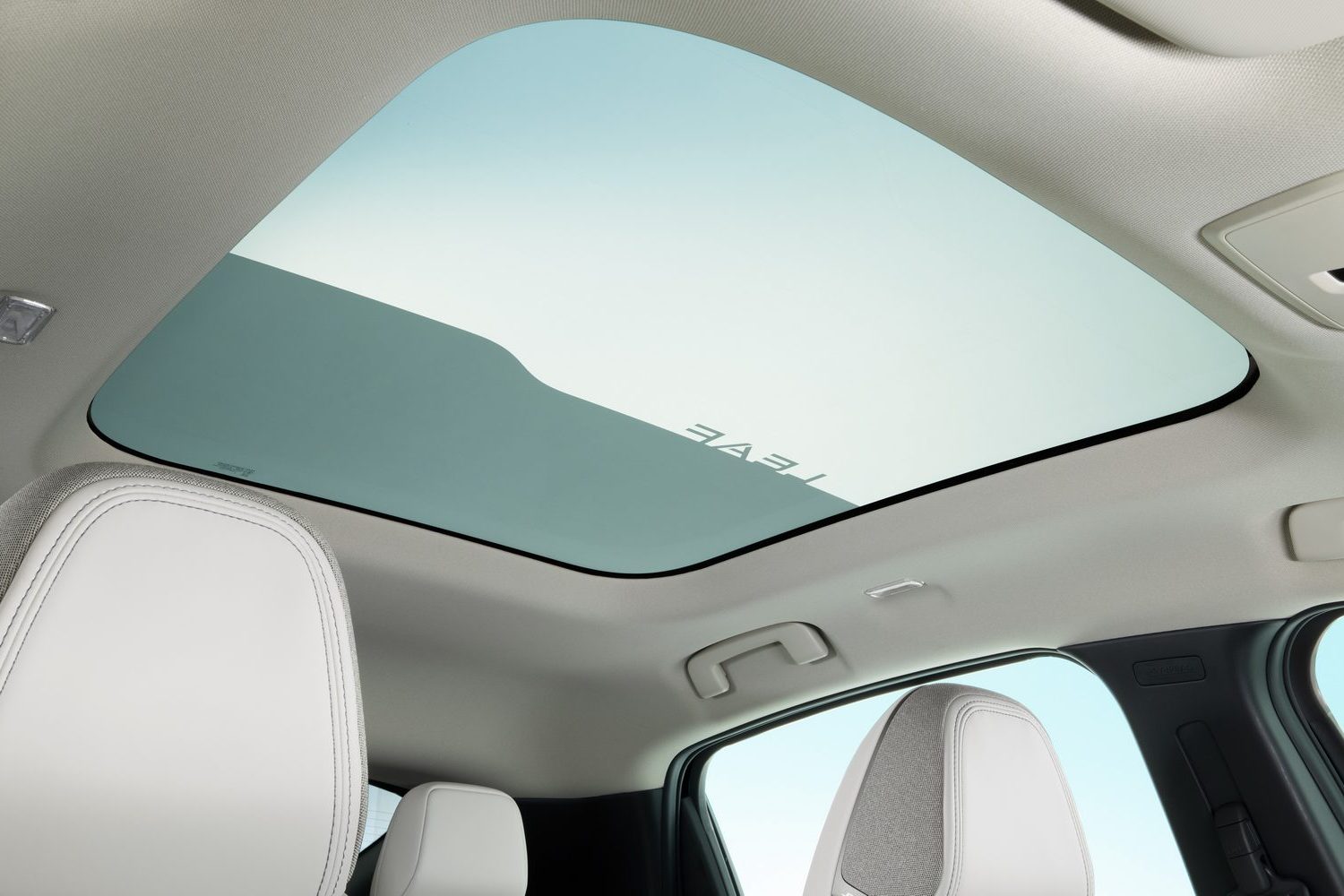
That battery is also fully integrated into the Leaf's heating and cooling system, with a standard heat pump for the big battery versions (it's optional for the other one). Waste heat from the battery can be used to warm up the cabin, improving efficiency, but excess heat from the cabin can also be used to warm up the battery when necessary.
Then there's the optional glass roof, which uses electrochromatic tech. It can be dimmed or made clear in sections, according to taste, and there's a neat little Leaf badge incorporated into the liquid crystals in the glass.

That glass is also infra-red absorbing, allowing Nissan to claim it's as effective at keeping heat out as a retractable blind. Binning the blind means that the roof can sit 12mm lower on the outside, to the benefit of aerodynamics, but without affecting rear headroom - which is improved by 30mm compared to the old Leaf, apparently.
The optional 12-speaker Bose stereo also includes a clever headrest speaker just for the driver, which allows them to hear phone calls or navigation instructions while the rest of the car's occupants keep listening to music or podcasts.
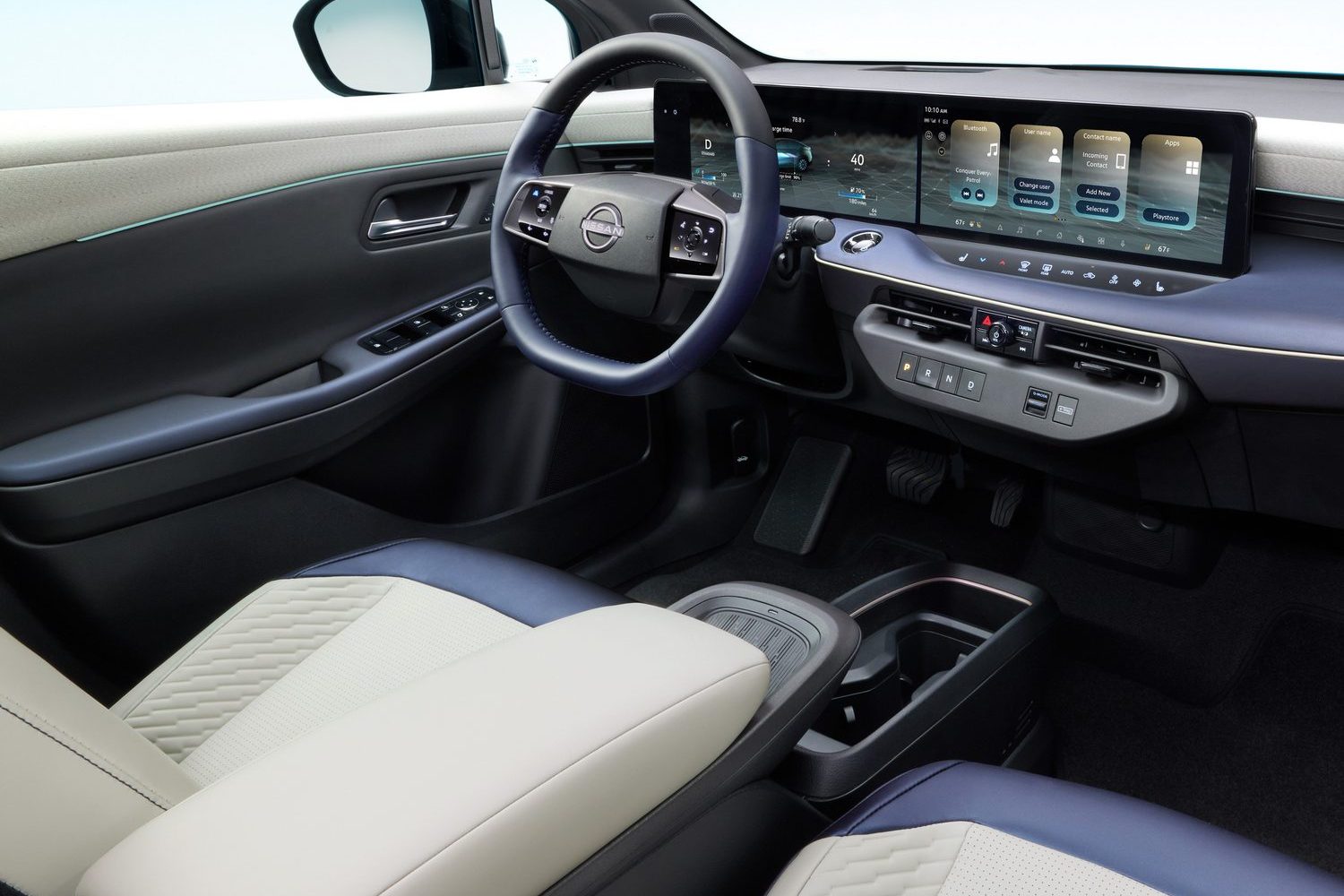
There's also an update for the Nissan phone app, which includes charging and remote locking, as well as a journey planning function and a reminder if you walk off without locking your car.
What about performance?
The new Nissan Leaf is no hot-rod, but it's on the money for its class. There's a single electric motor, driving the front wheels, which produces 176hp when partnered with the 52kWh battery, or 217hp when fitted to the 75kWh battery.
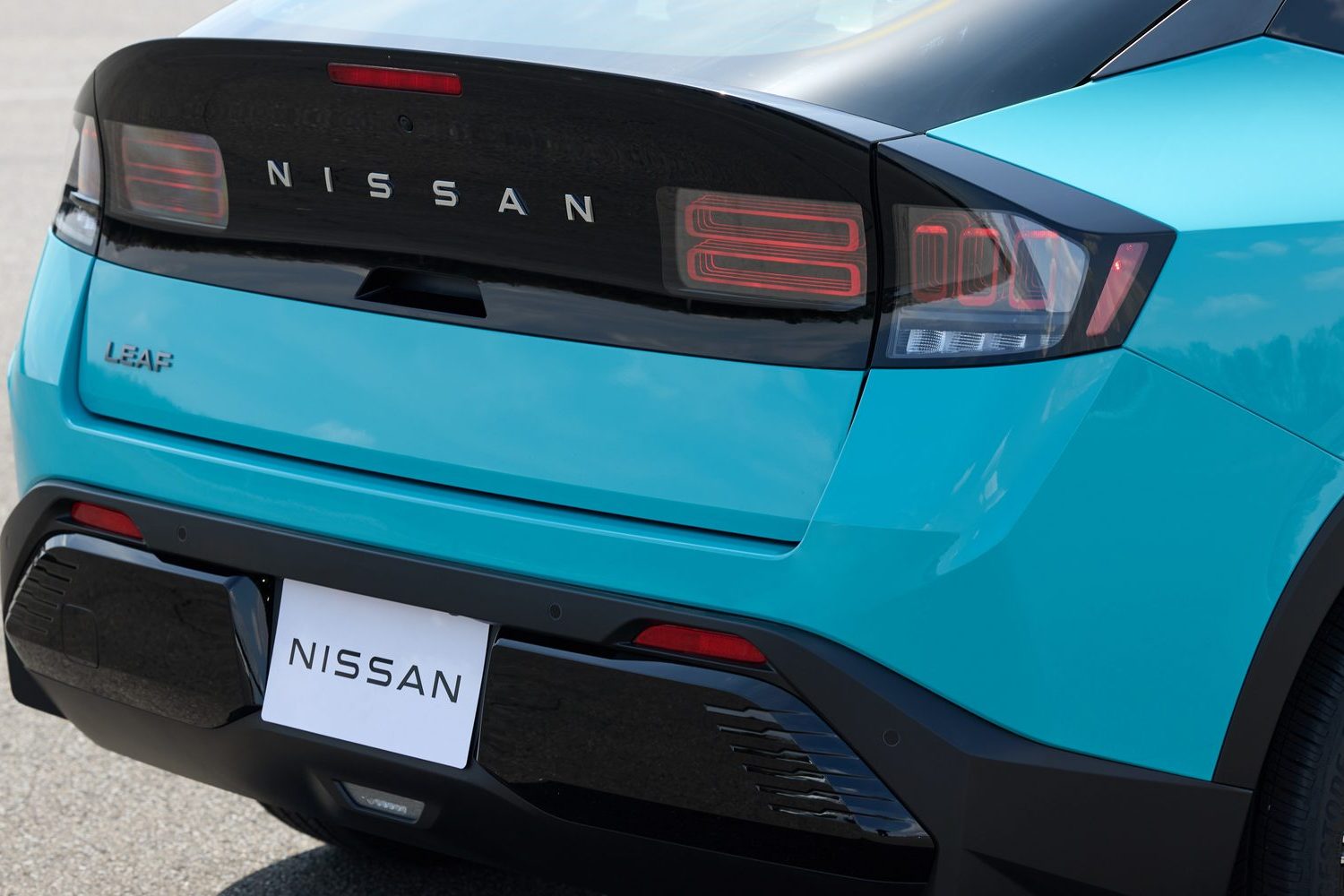
The 0-100km/h sprint takes 8.6 seconds for the entry-level Leaf, and 7.6 seconds for the more powerful version, and both cars have the same 160km/h top speed. Torque outputs are quite similar - 345Nm for the lower-powered motor, and 355Nm for the more powerful version.
The Leaf is quite light for an EV, with a kerb weight of 1,789kg for the entry-level model, and 1,937kg for the big-battery version.
How much will the new Leaf cost in Ireland?
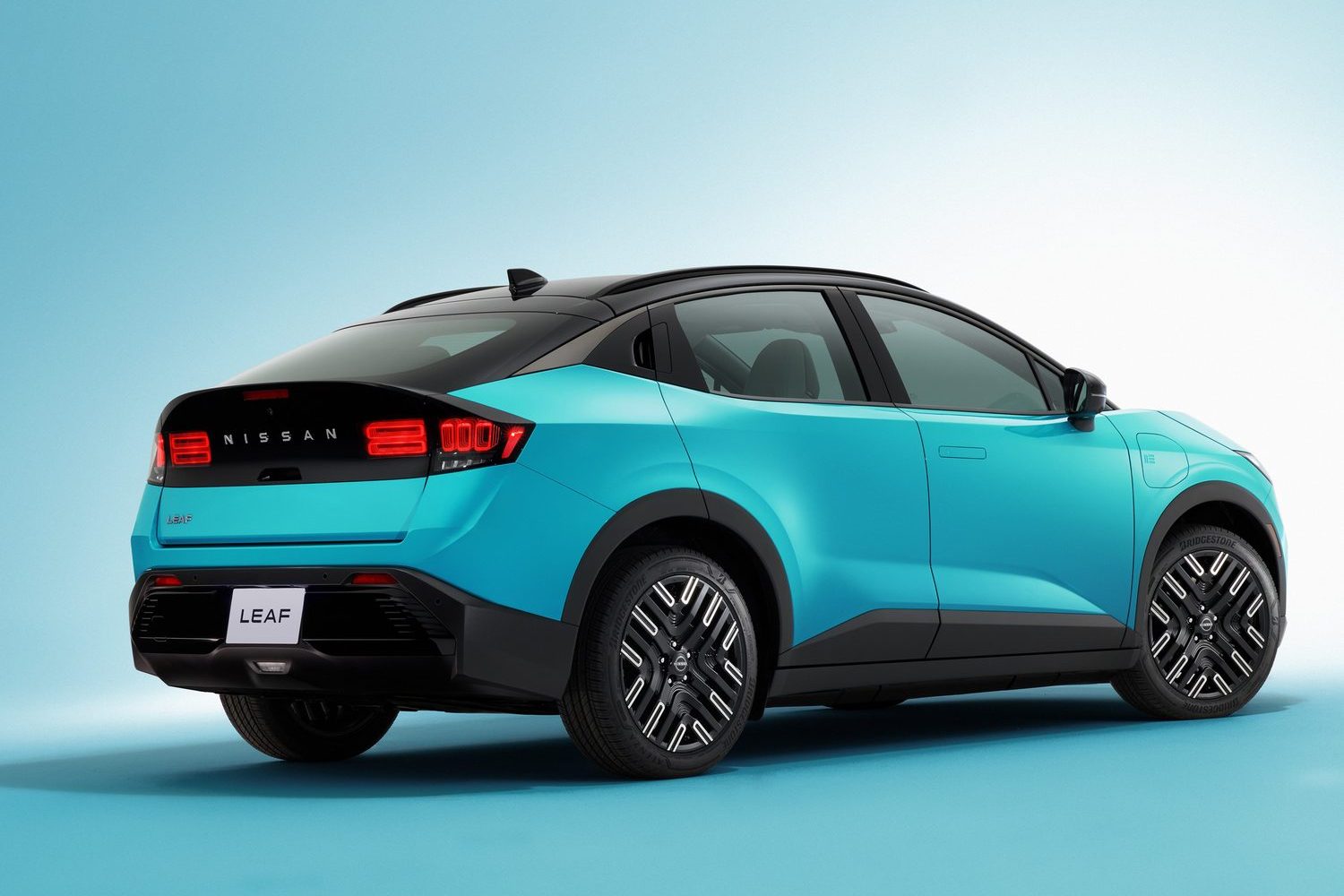
That's a big unknown at the moment. The new Leaf won't go on sale in Europe until March of next year, and it will be later to come to Ireland. With the entry-level model having a range of 436km, you'd expect it to compete with the likes of the most affordable Skoda Elroq and the Kia EV3, which suggests a starting price of around €36,000, while the big-battery versions will likely be in and around €40,000, although that's very much TBC.
That's a big step up from the sub-€30,000 price of the outgoing Leaf, but while Nissan says that it intends to provide a price and specification to entice the existing pool of Leaf owners (700,000 of them around the world, 290,000 in Europe alone), to step up to the new model it's worth remembering that the much more affordable new electric Nissan Micra is also coming soon, and that may be a more comfortable fit, in pricing terms, for existing Leaf owners.

